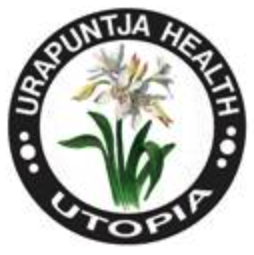Our History
The first regular form of Western medical service provision was provided from the 1970s when Health Department Sisters visited on a 3-weekly basis. There was one doctor appointed to service the area from Docker River near the Western Australian border to Lake Nash near the Queensland border. Pastoral stations had a radio for emergency contact with medical services in Alice Springs and aerial medical services but access to this for Aboriginal people was limited.
In July 1974, Congress was granted $18,000 from the Commonwealth Department of Health to conduct a survey of central Australia with the aim of developing a model for health service delivery to central Australian Aboriginal communities. Dr Cutter conducted a survey of the region west of Alice Springs focused on Papunya, and northeast of Alice Springs focused on Utopia.
The health survey outlined a model for health service development, and included inter- sectoral relationships, housing issues and the development of AHWs as key components of the health service. It took into account the different histories of these two areas, noting that in the eastern area, there were no government settlements such as existed in the west (e.g. Papunya, Yuendumu). Thus there was less institutionalisation in the Utopia area. The report also recognised the importance of Ngangkeris in the delivery of health care. Some funding was made available for at least a partial implementation of this model. As a consequence, the Aero Medical Service handed over the medical records of the people at Utopia to Congress that began an outreach health service to Utopia known as
the Angarrpa (Ankerrapw) Health Program in 1977.
In 1979, this program was renamed the Urapuntja Health Service when it incorporated and became independent of Congress. Urapuntja is the local name for the Sandover River that runs through the area. The local people had taken control, and the UHS has been autonomous since. Services were provided to people living at Artekerr (Three Bores), Ankerrapw (Homestead), Ngkwelay (Kurrajong), Atnarer (Soakage), Irrwelty, Ampilatwatja and Amaroo camp.
In 1980, the service employed one medical officer, two nursing sisters, 7 AHWs and one Ngangkere who serviced around 600 people living in seven different out-stations.
Today the health service has expanded to employ more than 30 people, servicing the following 16 outstations :
Arlparra, 3 Bores, Amengernternenh, Aniltye, Antarringinya, Arnkawenyerr, Atheleye, Camel Camp, Irrutja, Kurrajong Bore, Mosquito Bore, Mulga Bore, Apungalindum, Soakage Bore, Soapy Bore and Tomahawk.
Citation:
Urapuntja Health Service and Utopia Community A Report To The Teasdale-Corti Comprehensive Primary Health Care Project ‘Revitalising Health For All’ June 2011. Kevin Rowley1, Heather Anderson2, Sarah Doherty3, Alex Brown4, Emma Kowal2 1Onemda Vic Health Koori Health Unit, Centre for Health and Society, Melbourne School of Population Health, The University of Melbourne VIC 3010; 2Discipline of Anthropology, School of Social and Political Sciences, The University of Melbourne Vic 3010; 3Urapuntja Health Service, Utopia via Alice Springs NT 0870; 4Centre for Indigenous Vascular and Diabetes Research, Baker Heart and Diabetes Institute, Alice Springs NT 0870
